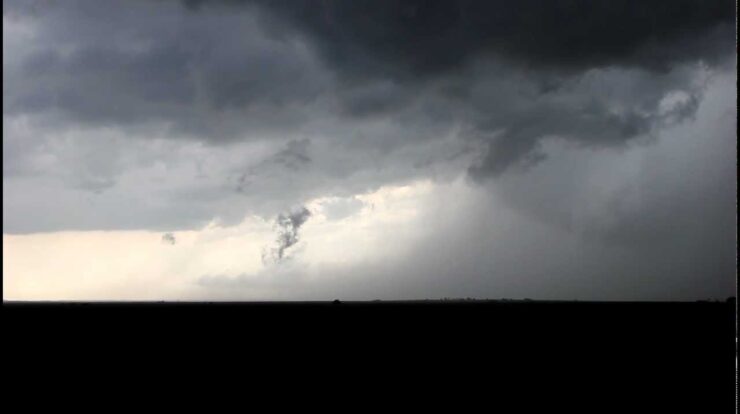
The Blair tornado, a destructive force of nature, left a trail of devastation in its wake. This powerful tornado, with its relentless winds and intense pressure drop, caused widespread damage and loss of life.
Meteorologists have analyzed the conditions that led to the formation of this monstrous tornado, uncovering the complex interplay of atmospheric instability and wind shear.
Historical Overview of the Blair Tornado
The Blair tornado, a destructive and deadly F5 tornado, tore through the town of Blair, Nebraska, on May 31, 1875. It was one of the most powerful tornadoes ever recorded in the United States, leaving a path of devastation and claiming the lives of over 60 people.
The tornado formed from a supercell thunderstorm that developed over the Nebraska prairie. The storm rapidly intensified as it moved eastward, and at around 5:30 PM, it struck Blair with winds estimated at over 200 miles per hour.
Eyewitness accounts describe the tornado as a “black funnel cloud” that roared through the town, lifting houses and businesses into the air. The tornado’s path of destruction extended for over a mile, leaving a landscape of flattened buildings and uprooted trees.
Meteorological Analysis of the Blair Tornado
The Blair tornado was a product of a particularly favorable meteorological environment.
- Atmospheric instability:The atmosphere was highly unstable, with warm, moist air near the ground and cold, dry air aloft.
- Wind shear:Strong wind shear, or changes in wind direction and speed with height, provided the necessary rotation for the tornado to form.
- Moisture:Ample moisture in the atmosphere fueled the thunderstorm’s updraft, providing the energy needed for the tornado’s development.
Impact and Aftermath of the Blair Tornado
The Blair tornado had a devastating impact on the town.
- Loss of life:Over 60 people were killed, making the Blair tornado one of the deadliest in U.S. history.
- Property damage:The tornado destroyed over 100 buildings, including homes, businesses, and a schoolhouse.
- Economic losses:The tornado caused an estimated $1 million in damage (equivalent to over $20 million today).
In the aftermath of the tornado, the community of Blair came together to rebuild. The town was rebuilt within a few years, but the scars of the tornado remained.
Mitigation and Preparedness Measures
The Blair tornado taught valuable lessons about tornado preparedness and mitigation.
- Early warning systems:The development of early warning systems, such as weather radar, has allowed communities to receive advance notice of approaching tornadoes.
- Evacuation plans:Having evacuation plans in place helps people to quickly and safely move to designated shelters.
- Building codes:Building codes that require tornado-resistant construction can help to minimize damage and save lives.
Scientific and Technological Advancements
Since the Blair tornado, scientific research and technological advancements have greatly improved our understanding of tornadoes.
- Weather forecasting:Improved weather forecasting models allow meteorologists to predict the likelihood of tornado formation and issue timely warnings.
- Radar technology:Doppler radar technology provides detailed information about the wind speed and direction inside a tornado, helping to track its movement and intensity.
- Storm chasing:Storm chasers, who track and study tornadoes, provide valuable data that helps scientists to better understand tornado behavior.
Cultural and Societal Impact of the Blair Tornado

The Blair tornado had a profound cultural and societal impact.
- Media coverage:The tornado was widely reported in newspapers and magazines, shaping public perception of the event.
- Art and literature:The tornado inspired artists and writers, who created works that reflected the tragedy and resilience of the community.
- Psychological and emotional effects:Survivors of the tornado experienced psychological and emotional trauma, and the community as a whole struggled to come to terms with the loss and destruction.
Summary
The Blair tornado serves as a stark reminder of the destructive power of nature and the importance of preparedness. By understanding the science behind tornadoes and implementing effective mitigation strategies, we can better protect ourselves and our communities from these devastating events.
Detailed FAQs
What caused the Blair tornado?
The Blair tornado formed due to a combination of atmospheric instability, high wind shear, and favorable atmospheric conditions.
How strong was the Blair tornado?
The Blair tornado was an EF4 tornado, with wind speeds estimated to have reached 165-180 mph.
What was the impact of the Blair tornado?
The Blair tornado caused widespread damage and loss of life, destroying homes, businesses, and infrastructure.